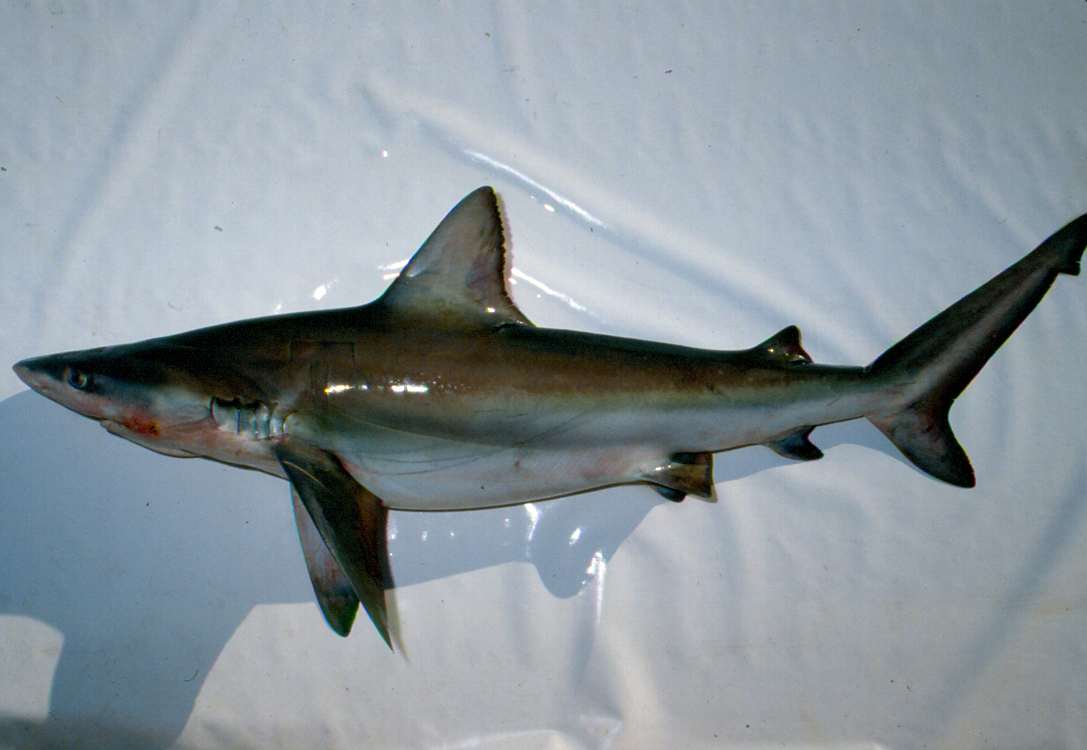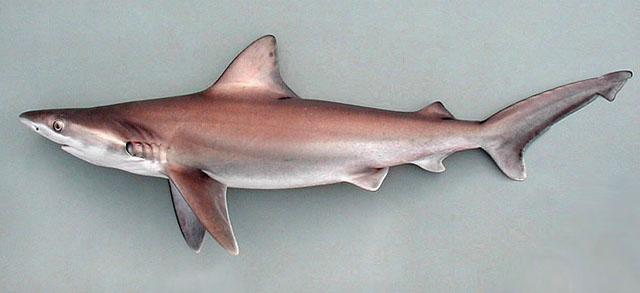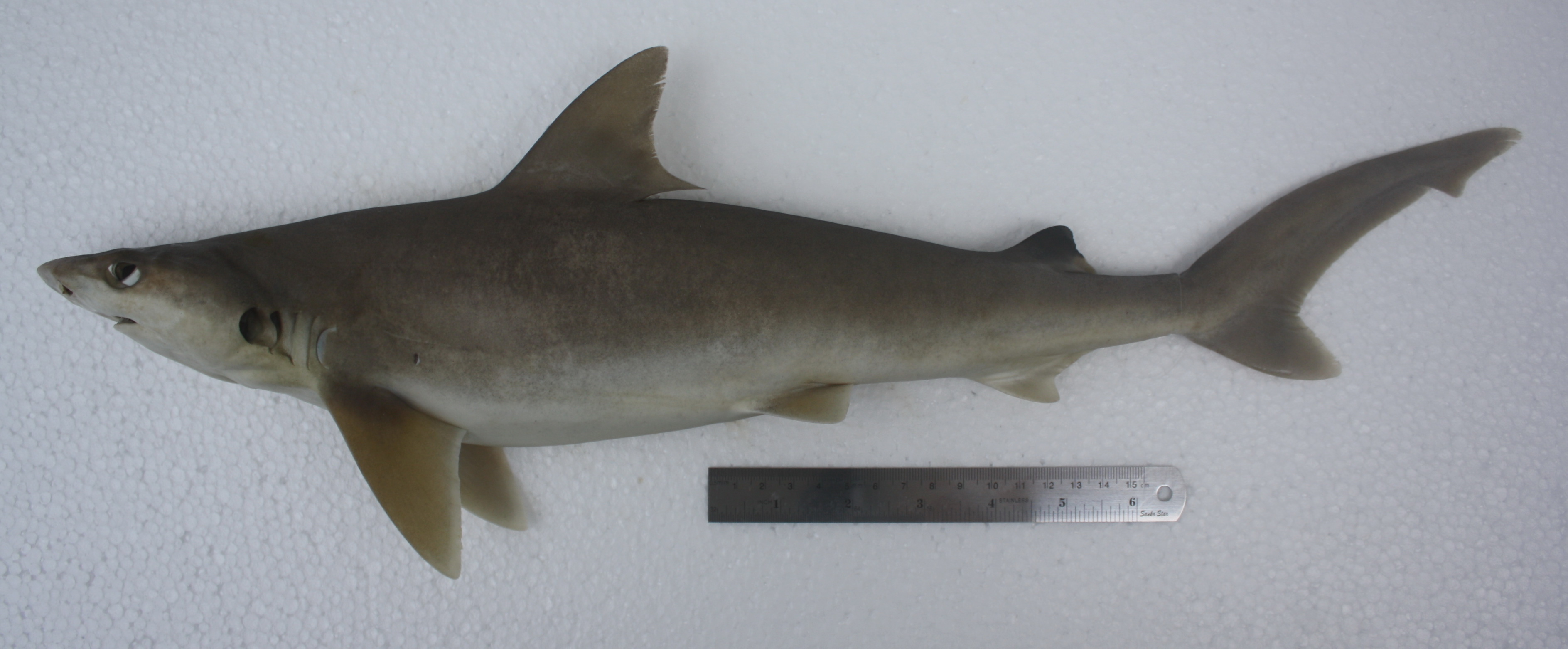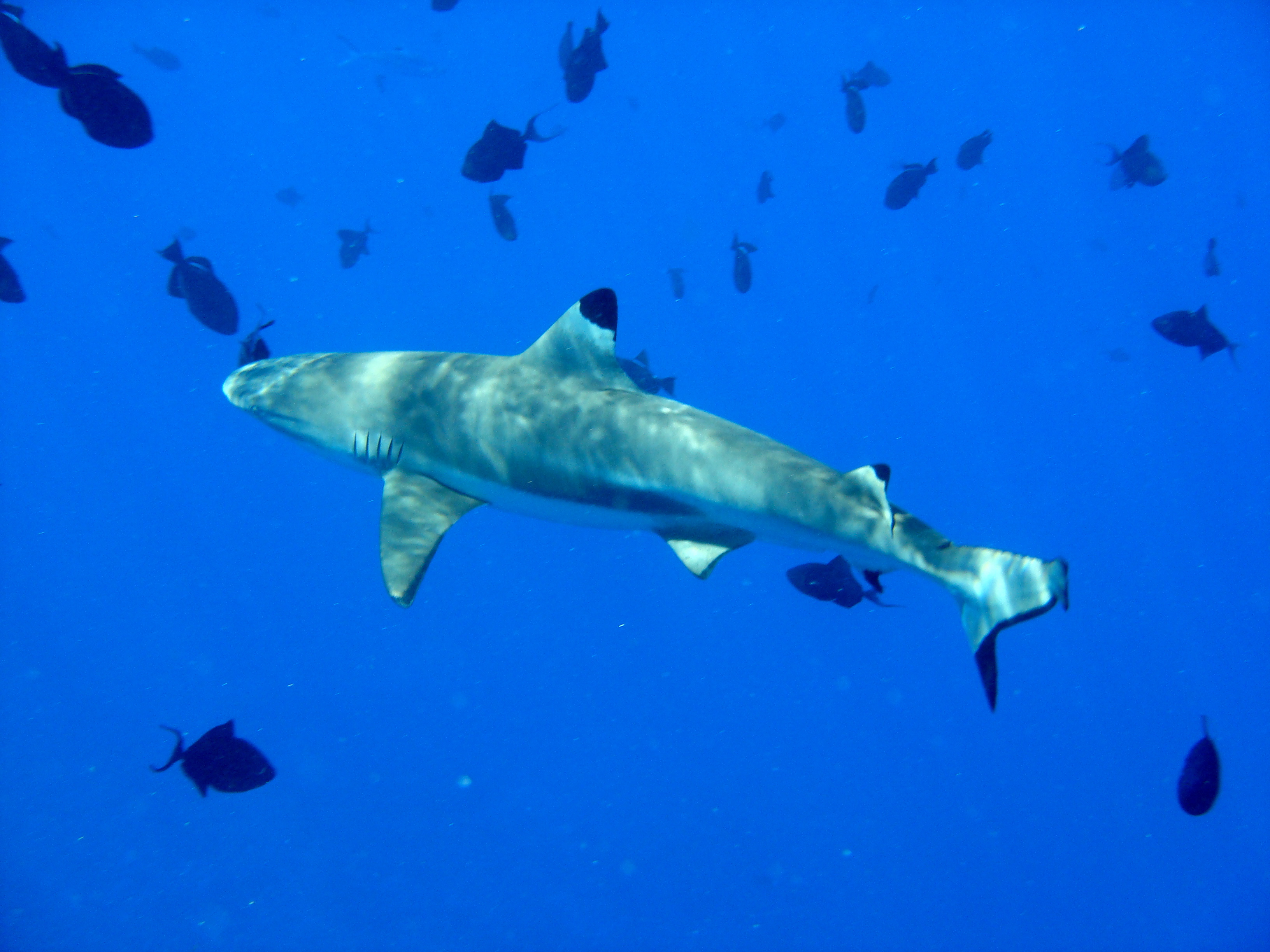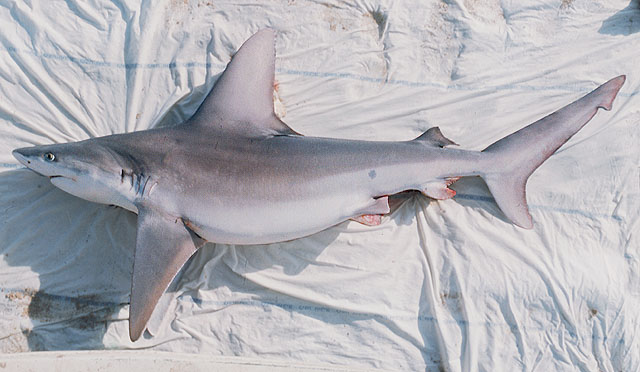Carcharhinus tjutjot
Carcharhinus tjutjot is a shark from the family of requiem sharks ( Carcharhinidae ). It occurs in the South China Sea between Taiwan and Indonesia and lives on the coast to depths of less than 100 meters. The species was named after an Indonesian word for shark.
Appearance and characteristics
Carcharhinus is tjutjot a small shark and a maximum of 87-88 cm long. He has a relatively long, pointed snout. The teeth in the maxillary anterior beside the main peak have a coarse serrated blade-like part. The lower front teeth are narrower and are slightly slanted. Your margins are notched and finely serrated. Overall, 26 to 28 teeth found in a row of teeth in the maxilla and 24 to 30 teeth in a row of teeth in the lower jaw. A Interdorsalkamm with moderate to strong ridge is present. The first dorsal fin is relatively long and not sickle-shaped. It starts on the center of the inner edge of the pectoral fins. Its height is 1.4 to 2 times its length. The second dorsal fin is much smaller, triangular with a broad base and is the crescent-shaped anal fin opposite symmetrical. The height of the second dorsal fin is 29 to 37 % of the height of the first dorsal fin. The amount of light crescent-shaped anal fin reaches the 0.9 to 1.3 times the height of the second dorsal fin. Carcharhinus is tjutjot whitish on the dorsal side and light brown on the belly side. On the second dorsal fin, a black spot is on the top third of the fin. The other fins are monochrome. The number of vertebrae is absent at 113 to 129 spray holes.
System
The shark was described in 1939 by the Dutch ichthyologist Pieter tjutjot Bleeker under the name Prionodon, but synonymized in 1982 by Garrick with the Weißwangenhai ( Carcharhinus dussumieri ). 2012 William T. White revalidated the way after he tjutjot several specimens of C. and C. dussumieri examined and had compared. Within the genus Carcharhinus C. coatesi belongs to C. sealei -C. dussumieri group, small Indo-Pacific sharks, all of which have a similar dentition, a similar fin and snout shape and always a dark spot on the second dorsal fin have, while all other fins are monochrome.


